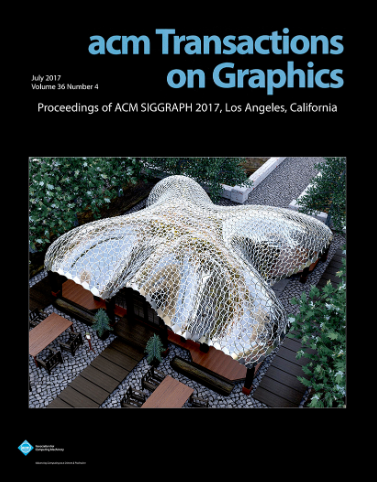Learning Based Toolpath Planner on Diverse Graphs for 3D Printing
IF 9.5
1区 计算机科学
Q1 COMPUTER SCIENCE, SOFTWARE ENGINEERING
引用次数: 0
Abstract
This paper presents a learning based planner for computing optimized 3D printing toolpaths on prescribed graphs, the challenges of which include the varying graph structures on different models and the large scale of nodes & edges on a graph. We adopt an on-the-fly strategy to tackle these challenges, formulating the planner as a用于 3D 打印的基于学习的多样化图形工具路径规划器
本文提出了一种基于学习的规划器,用于计算规定图形上的优化 3D 打印工具路径,其挑战包括不同模型上的不同图形结构以及图形上的大规模节点和边。我们采用即时策略来应对这些挑战,将规划器设计为基于深度 Q 网络(DQN)的优化器,以决定下一个要访问的 "最佳 "节点。我们通过以图上不同节点为中心的局部搜索图(LSG)来构建状态空间,并通过精心设计的算法对其进行编码,这样就可以识别出类似配置中的 LSG,从而重新使用先前学习的 DQN 先验,加快工具路径规划的计算速度。通过定义相应的奖励函数,我们的方法可以涵盖不同的 3D 打印应用。我们选择了线框打印、连续纤维打印和金属打印中的工具路径规划问题来证明其通用性。通过在物理实验中测试生成的工具路径,我们的规划器的性能得到了验证。通过使用我们的规划器,可以成功地打印出多达 4.2k 支杆的线框模型,在连续纤维工具路径上可以避免多达 93.3% 的急转弯,在金属打印中可以减少 24.9% 的热变形。
本文章由计算机程序翻译,如有差异,请以英文原文为准。
求助全文
约1分钟内获得全文
求助全文
来源期刊

ACM Transactions on Graphics
工程技术-计算机:软件工程
CiteScore
14.30
自引率
25.80%
发文量
193
审稿时长
12 months
期刊介绍:
ACM Transactions on Graphics (TOG) is a peer-reviewed scientific journal that aims to disseminate the latest findings of note in the field of computer graphics. It has been published since 1982 by the Association for Computing Machinery. Starting in 2003, all papers accepted for presentation at the annual SIGGRAPH conference are printed in a special summer issue of the journal.
 求助内容:
求助内容: 应助结果提醒方式:
应助结果提醒方式:


